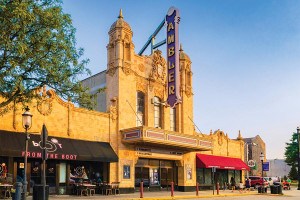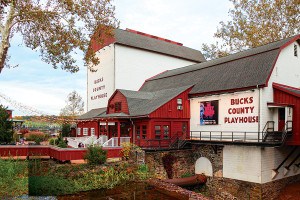Go Green: Temple Offers Sneak Peek at “Verdant” Master Plan

Image by LRSLA studio Inc. via Temple News
Will Temple University ever build that much-whispered about football stadium everyone thinks they’re planning? Speculate all you want, it honestly doesn’t seem like the Owls are even thinking about that at this point. Instead, all signs point to the school buckling down on prepping for the upcoming green redesign of its main campus.
Visualize Temple, TU’s Campus Master Plan (.PDF), which came to our attention last December, will involve the demolition of Barton Hall, Beury Hall, and the Biology-Life Sciences building. Taking their respective places would be a new 210,000-square-foot library designed by Norwegian architect Snøhetta and Philadelphia-based Stantec, where Barton now stands, and a massive central green space – informally referred to as “the quad” –, where Beury Beach, its namesake hall and the Bio-Life building are currently located.
Other projects would also be phased in within the next five or so years, according to an October article from Temple News, including an interdisciplinary science building at 12th and Norris. This latter construction would be the only other structure slightly stepping out of Temple’s footprint, which university officials stress they have no plans to expand.
Complementing Visualize Temple is Verdant Temple, the university’s landscape master plan, which launched its pilot project at Temple’s Liacouras Walk and Wachman Plaza a little over a week ago. According to Temple News’ Brandon Lausch, work at the site will pave the way for “more social space” and better accessibility to Wachman Hall with the rest of campus.
It also serves as preview of what’s to come.
“It’s so important for [Temple students and staff] to see a piece of the new landscape in place; to see it so they know what’s coming,” says Temple University architect Margaret Carney, who spoke with us about the Liacouras Walk project. “Theoretically, this landscape should last 100 years,” she tells us, noting how existing landscape must be completely demolished– “[it] involved pulling out existing utilities, some water and lighting” – to make way for the new.
“When we talk about landscaping, we’re talking about paving material, lighting, signage, plant material, and curbs. One of the biggest changes is going to be the sustainability benefits,” Carney says, noting how the current paving, made primarily of concrete, will be replaced by pervious pavement.
Green space will hold a mix of grass, planted trees (“between Shusterman and Wachman green”), and areas with “small plants that flower at different times of the year.”
Another aspect that will see an upgrade is the social one, as Carney explains: “We looked at the pedestrian traffic and the focus has been on creating spaces that feel welcoming, look great, and encourage people to sit and talk.” For example, “rather than just benches, trying to create a space where people sit in a group.” As for the question of accessibility:
“[We’re] carving out pathways that meet the needs of people and helping them get [where they’re going] … it’s partly about way finding.”
The Liacouras-Wachman pilot project, says Carney, will reach substantial completion in the fall and is being used to inform other projects in store for Temple. On a grander scale, it allows for “a process of learning and putting things in, living with them, and tweaking them. [Verdant Temple] sets down design guidelines, which will be seen as a whole for the first time with this Liacouras Walk project.”
In addition to this redesign, Wachman Hall is also currently undergoing renovation, which Carney says is just finishing up. The work involves building new classrooms to house lessons for when Barton Hall comes down (likely to be “within the next week or two,” she says). That project will be done by fall.
Although an official Verdant Temple plan handbook has yet been released, Carney informs us various projects, like the university’s new library to replace Barton Hall, are still in the design stage and are anticipated to go into construction next year.
- H/T: Landscape work begins on Liacouras Walk [Temple News]


